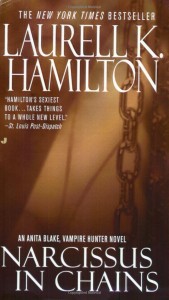 To be clear, this is not the worst book I’ve ever read. It might well be the worst book I’ve ever finished, though. I’d try to make a case for the fact that I’ve been in a poor mood the last week or two, but the fact is, I hated it and nearly quit reading long before the mood started. If I was in jail on a deserted island and this was the only book available, I might have to renounce literacy. Let this be a warning to you.
To be clear, this is not the worst book I’ve ever read. It might well be the worst book I’ve ever finished, though. I’d try to make a case for the fact that I’ve been in a poor mood the last week or two, but the fact is, I hated it and nearly quit reading long before the mood started. If I was in jail on a deserted island and this was the only book available, I might have to renounce literacy. Let this be a warning to you.
The funny part is, I was praising the last book for being so much more on target than the couple before it. The way this was accomplished, I have since realized, was by taking our Anita out of her home turf, out of the range of her various boyfriends, and putting her somewhere completely different with a man with whom she has only a strictly professional relationship, and helping him solve a mystery. How did I realize this, you ask? By virtue of the fact that Narcissus in Chains is the exact opposite of that book in practically every way.
Anita returns home, ready (thanks to some unfortunate lessons learned in New Mexico) to come to terms with her relationships with vampire and werewolf, both emotionally and parapsychologically, I guess. (They share some kind of power between them, you see.) In the process of doing so, she discovers just how badly the things she has been ignoring in her life for the past six months have collapsed and goes about setting them right. Meanwhile, there are plenty of new players in town to create distractions and complications for all concerned. Plus, a little fraction of a mystery? Sort of? As has happened before, I’m willing to admit that everything tied up much more neatly than I had expected, in the last 40 pages or so. But that’s pretty cold comfort. It’s fine for Anita to not see the strings connecting everything together, but after enough times that I can’t as a reader, it starts to become an exercise in futility. I’m simply not paranoid enough for these books, I guess. All I know is, the mystery part seemed so backburnered that by the time the bad guy was revealed as having tried to kill Anita twice before, I had no idea who they were referring to, and couldn’t find any indication of it at a couple of earlier points in the book that I thought might be applicable. And then, sure, a few pages later, I figured out what they meant. But somehow, that seems like a pretty bad sign. This is all I’m saying.
Pingback: Shards of Delirium » Cerulean Sins
Pingback: Shards of Delirium » The Dance of the Dissident Daughter: A Woman's Journey from Christian Tradition to the Sacred Feminine